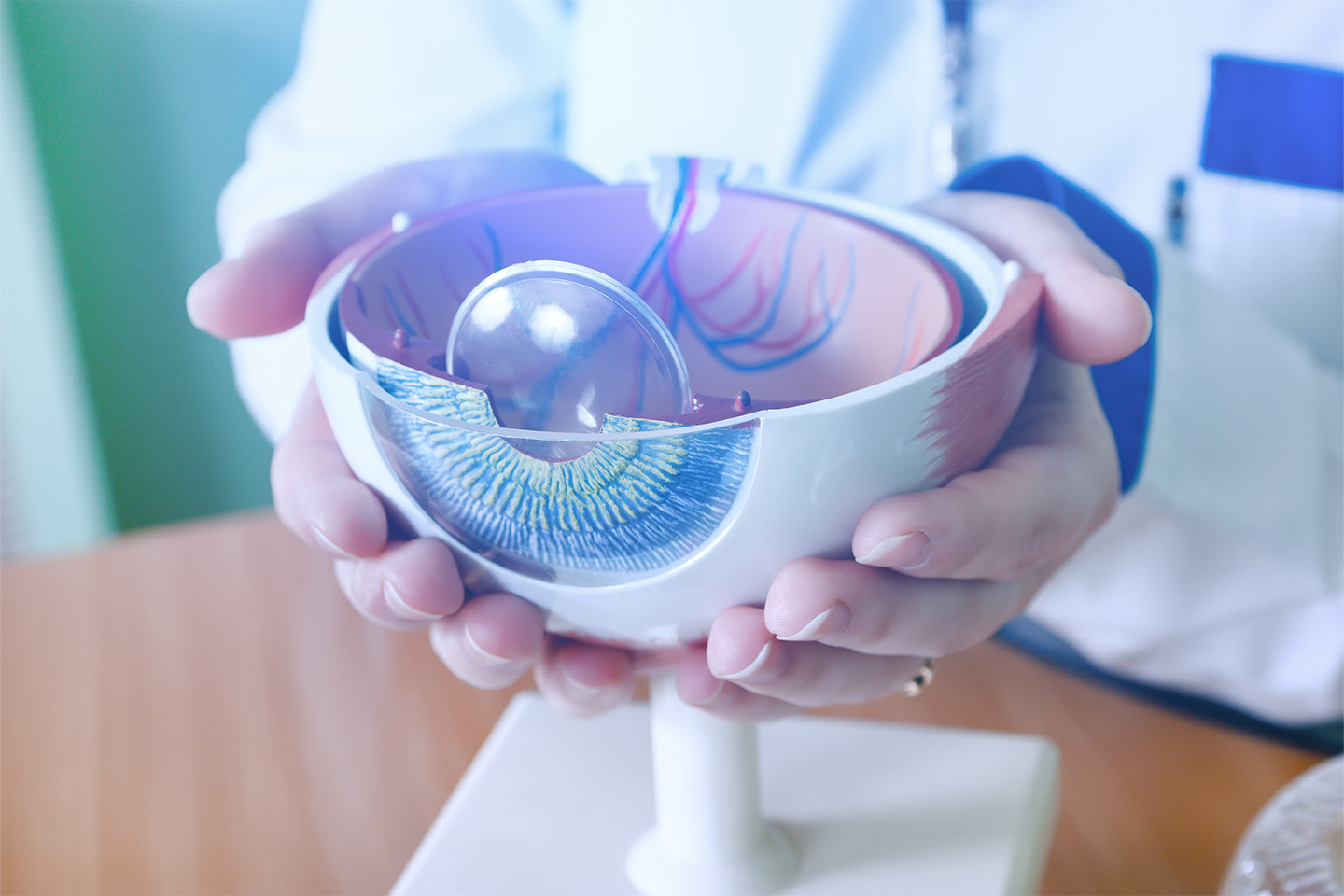How Do Your Eyes Work?

Understanding how your eyes work is key to ensuring that your vision is as crisp and clear as possible.
Sight is something that many people take for granted — until they start experiencing problems with it. In order to understand how issues like near-sightedness, far-sightedness, and astigmatism can affect your quality of life, it’s important to learn how vision actually works. Let’s begin with the anatomy of the eyes.
The Eye’s Anatomy
Your eye is made up of many components that all work together to take wavelengths of light and turn them into images in your brain. The main parts of your eye are the cornea, iris, pupil, lens, and retina, which is made up of tiny nerve cells called rods and cones. Once light has passed through all of these regions, it is sent to the brain’s visual cortex as a series of electrical impulses.
To understand how your eyes work, we need to look at how each piece of the eye interacts with light to create the final image.
The Cornea
When light is reflected off of an object and into your eye, the first part it will hit is the cornea: the dome-shaped, clear, thin layer of tissue on the outside of your eye. The cornea then focuses this light toward the pupil and iris. It is responsible for 65-75% of your eye’s focusing power.
The Pupil and Iris
The pupil and iris work together to control how much light actually enters the eye. In bright light, the iris closes to make the pupil smaller and decrease the amount of light that enters. In dim light, the iris opens to make the pupil larger and increase the amount of light that enters the eye.
The Lens
Right behind the pupil and iris is the lens, which provides the remaining 25-35% of the eye’s focusing power. The lens is flexible and elastic — the ciliary muscles change its shape so it can bend light and direct it towards the retina. The lens becomes more elongated to focus on objects that are far away and more rounded to focus on those that are nearby.
The Retina
The retina is at the back of your eye and is the last spot that light is processed before it is sent to the brain. This thin layer of tissue contains millions of light-sensing nerve cells called rods and cones. Cones are responsible for your color vision. They are concentrated at the retina’s center and when bright light hits them, they provide you with clear central vision. Rods, on the other hand, are monochrome. They extend to the retina’s outer edge and provide peripheral vision. They help you detect motion and give you the ability to see in dim light and at night. The rods and cones then convert light into electrical impulses that the optic nerve sends to the brain’s visual cortex to create an image.
Causes Behind Common Vision Problems
The most common vision problems are near-sightedness (myopia), far-sightedness (hyperopia), and a defect in the eye that results from either cornea or lens curvature (astigmatism).
Myopia
Myopia occurs when light rays are brought into focus before the retina, meaning that they don’t hit the retina at the back of the eye. This is due to the eyeball being too long from front to back or the cornea and lens’ focusing power being too high (meaning one of them is too curved).
Hyperopia
In hyperopia, light rays are brought into focus behind the retina. This occurs because the eyeball is too short from front to back or because the cornea and lens’ focusing power is too low (meaning it doesn’t curve enough).
Astigmatism
Astigmatism occurs when vision is blurred due to the cornea or lens of the eye having an irregular shape. In normal eyes, the lens and cornea have pretty similar curvature in all directions to help focus light on a single point in the retina. When you have an astigmatism, there’s more curvature in one direction than the other, making it impossible for light to focus on one part of the retina. The result is that vision is blurred at all distances.
How to Address Vision Problems
Refractive errors, like myopia and hyperopia, as well as astigmatism, can be helped with the aid of glasses or contact lenses. The only way to permanently correct these issues, however, is through a refractive laser surgery, like LASIK, which can change the curvature of the cornea, thus changing its refractive power.
If you’re experiencing vision problems, don’t hesitate to schedule an appointment with an eye care professional or begin considering whether LASIK might be the right choice for you.
Turn To The Top Eye Doctors In Texas
Check out one of our locations below for the best eye care near you:
[DISPLAY_ULTIMATE_SOCIAL_ICONS]








